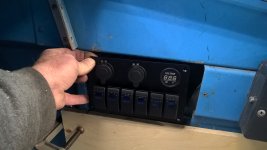ShoestringMariner
Lieutenant Commander
- Joined
- Apr 18, 2015
- Messages
- 1,605
There's really not much flex in the trim piece once everything is tied together. The attachment to that shelf, attachment of the trim, trim secured to the deck, along with the attachment to the vertical supports on both ends really tightens things up. It's amazing to see how much flex you get when you start removing the splashwell, gunnels, bow caps, side panels, consoles, etc. and how it all tightens back up when you reinstall them with new rivets/hardware. It really is engineered as an overall system.
The aluminum angle would work just fine as long as you secure it both to the deck and the side
The only thing I don’t like about this attachment be an angle or a formed Z channel is that it is fastened to the floor with screws. Even with screws drizzled with 4200 or 5200 may still allow water to get down into the plywood over time. My floors were so rotten, the side panels basically pulled right out once the rivets were removed on the upper section.
Do you guys think there’s any value to adding some light, bent aluminum channels from the stringers outwards in a few places and use large flange rivets through the floor into those angle or J members? These angles or J members could be tied in at the rib end. And because my ribbons already have two holes in them, I might just do this on every rib or every other so I’ve got better floor fastening capabilities at the end of the rib location.
Not trying to hijack your post R, thought there might be some value to bringing it up


































